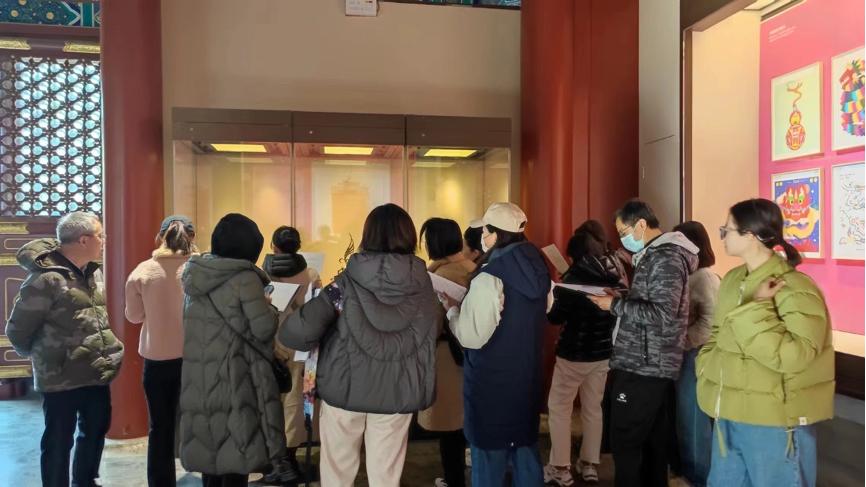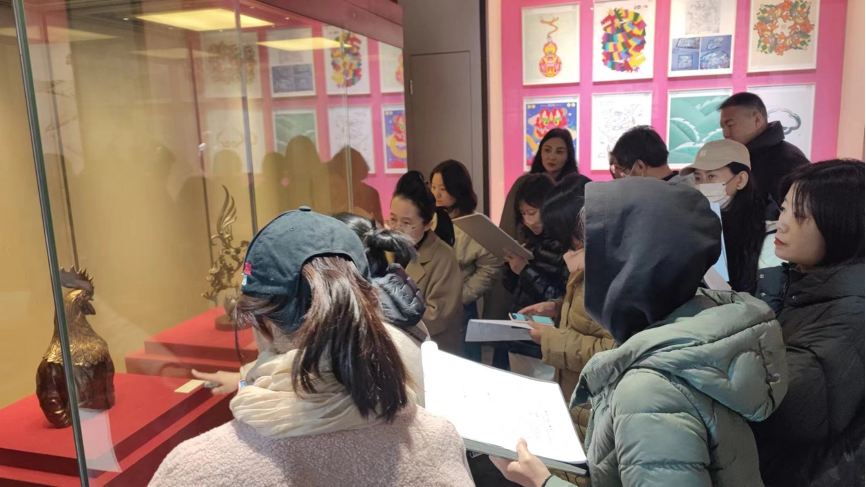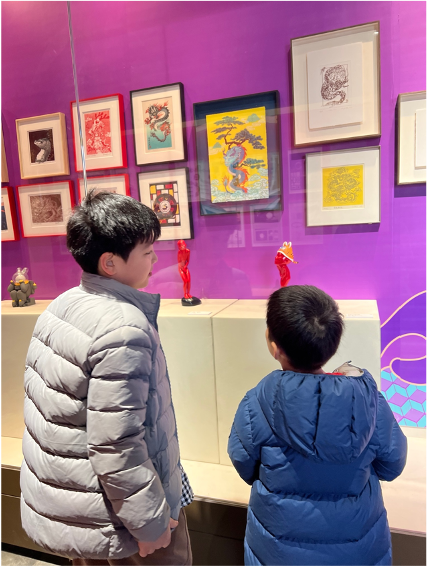The Global Zodiac Design Competition is a brand cultural event jointly sponsored by Beijing Municipal Culture and Tourism Bureau and Central Academy of Fine Arts, and undertaken by Beijing Overseas Cultural Exchange Center and other units.
The competition aims to enhance the promotion of Chinese zodiac culture, expand the cultural significance of the Spring Festival, and facilitate the construction of international communication capacity for outstanding traditional Chinese culture.

Kang Jianlin, Contest featured designer, contest poster
" The 2024 Global Zodiac Design Competition(Jiachen Year of the Dragon)" will be showcased at Chanfu Temple in Beihai, China, from January 18 to March 11, 2024. This exhibition is a collaborative effort between the Central Academy of Fine Arts Yuanmingyuan Research Center and Beijing Overseas Cultural Exchanges Center, following the successful showcase of the same theme at the exhibition hall of Beijing Overseas Cultural Exchange Center in Chang'an Building on December 8, 2023. It is organized in partnership with Beihai Park Administration Office of Beijing and features diverse artists' interpretations. The exhibition will be open for 54 days until the closing of the exhibition on March 11, with a total of 82,000 visitors.
Beihai Park is situated in the heart of Beijing, adjacent to the Palace Museum and Jingshan Park. Boasting a history spanning over 850 years, it stands as our nation's oldest and most impeccably preserved imperial garden. Beihai Park has been built and improved in the Jin, Yuan, Ming and Qing dynasties to form its current layout, and it has become a representative work of the garden pattern of "one pool and three mountains" in Chinese classical gardens.

Bian Kai, Flying Ice Dream from Beihai
The selection of Beihai Park as the exhibitiion for this competition invitational exhibition is not only due to the perfect alignment between the renowned Nine Dragon Wall in Beihai Park and the theme of Jia Chen Dragon Year, but also because Chanfu Temple, a cultural heritage site supported by Beijing Beihai Park Management Office, aligns seamlessly with the competition's objective of promoting zodiac culture and expanding the significance of the Spring Festival.

A digital orthographic image of the Nine Dragon Walls in Beihai Park, built in 1756, the 21st year of Emperor Qianlong's reign in the Qing Dynasty
Chanfu Temple is located on the north bank of Taiye Pool. It was originally the site of Taisu Hall in the Ming Dynasty. During the reign of Kangxi, the often stayed here in the summer with his mother. In the 11th year of Qianlong(1746), it was changed into a Buddhist temple by Emperor Qianlong’s edict. Chanfu Temple is located in the north facing the south, and the front gate is on 24 steps.
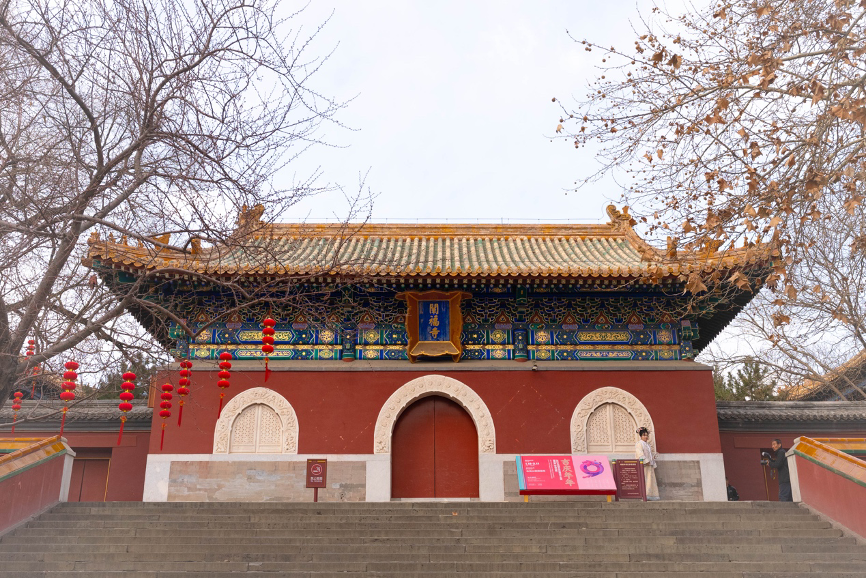
front gate of the Chanfu Temple mountain gate located at Beihai park
Inside the mountain gate of the temple, there are bell towers and drum towers in the east and west. The Tianwang Hall with gable and hip roof in green glaze and yellow glaze edge is located at the north, The east and west sides of the north of Tianwang Hall are divided into east and west halls. This exhibition is held in the Tianwang Hall and the East and West side halls.



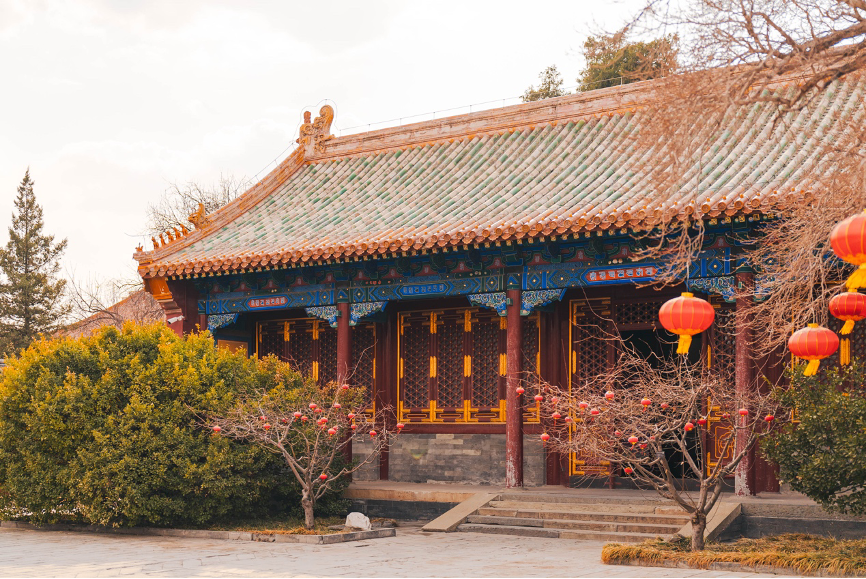
Interior view of the courtyard of Chanfu Temple
According to Qing history, every year from the first day of the twelfth month to the fifteenth day of the first month in the traditional Chinese calendar, the royal family held a grand blessing ceremony in Beihai Chanfu Temple. Since the seventeenth year of Qianlong (1752), every year on the first day of the twelfth month, the Qianlong Emperor would go to the Temple of Chanfu to worship Buddha, and hold a "blessing ceremony", which means " pray for good fortune"; then go back to the Chonghua palace with "blessing pen" to write blessings. Known as the "first blessed place in Beijing", Chanfu Temple, with its strong Spring Festival cultural heritage and peaceful atmosphere of the exhibition venue, is in line with the theme of the Zodiac competition and the design art theme of the Year of the Dragon.
A total of 72 winning works of the " The 2024 Global Zodiac Design Competition(Jiachen Year of the Dragon)" were displayed in the exhibition, and artists were invited to exhibit 35 zodiac art works and 120 Dragon New Year prints. The exhibition has been strongly supported by the School of Chinese Painting, the School of Design, the Department of International Exchange and Cooperation, the Department of Sculpture, the Department of Printmaking, the School of Architecture and the School of Humanities of the Central Academy of Fine Arts.

Exhibition signage in front of front door of Chanfu Temple
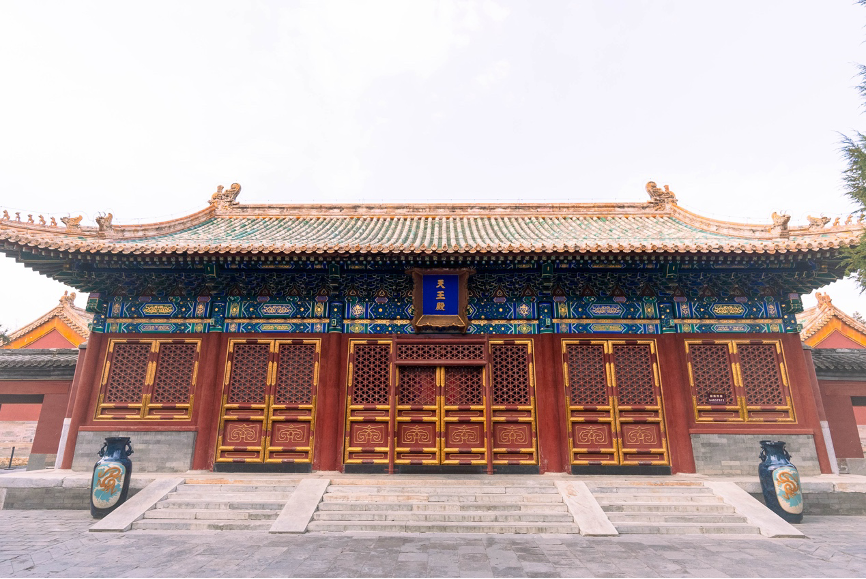
South entrance of Tianwang Hall exhibition Hall
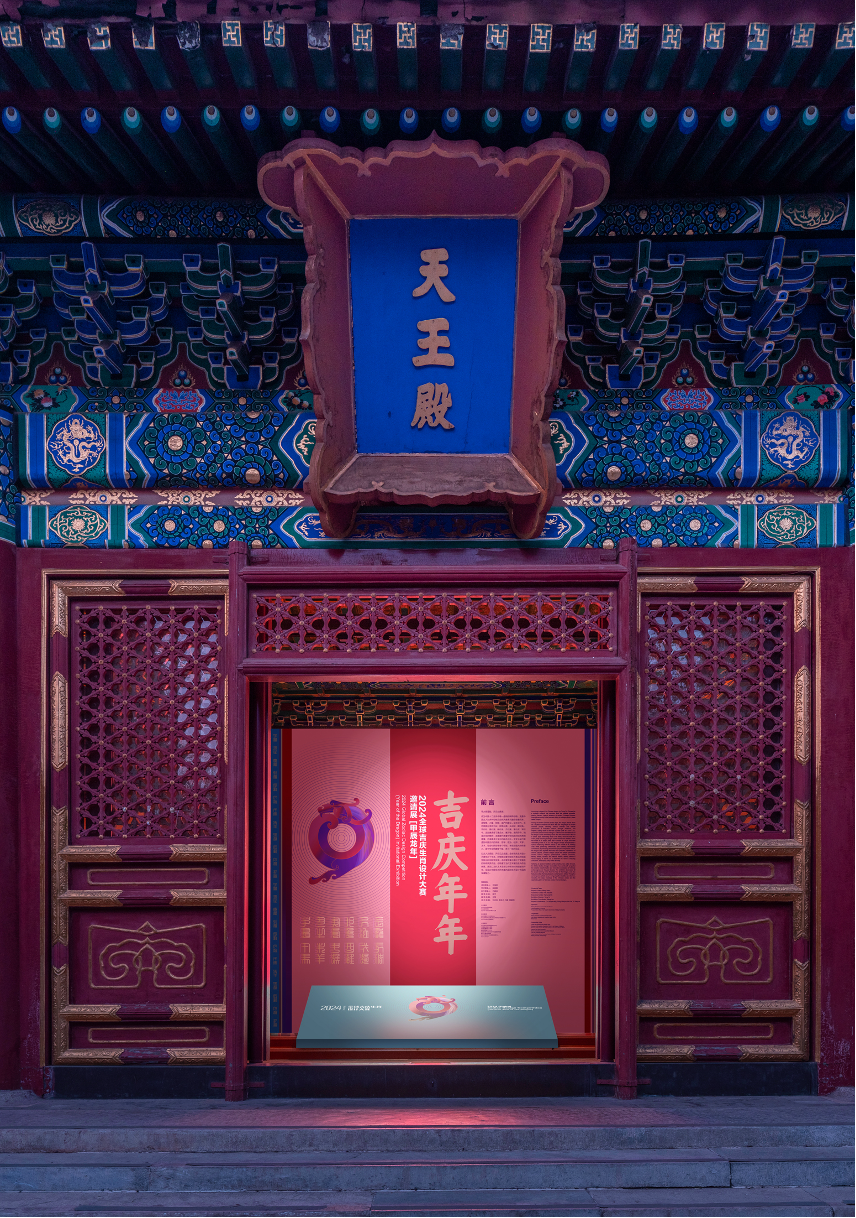
Exterior view of Tianwang Hall exhibition Hall

winning works of the Zodiac competition and sculptures created by artists such as Han Meilin
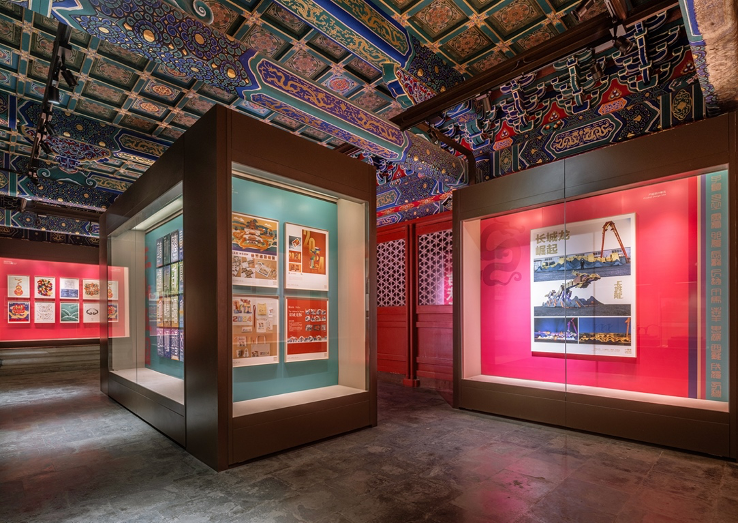

winning works of the Zodiac competition
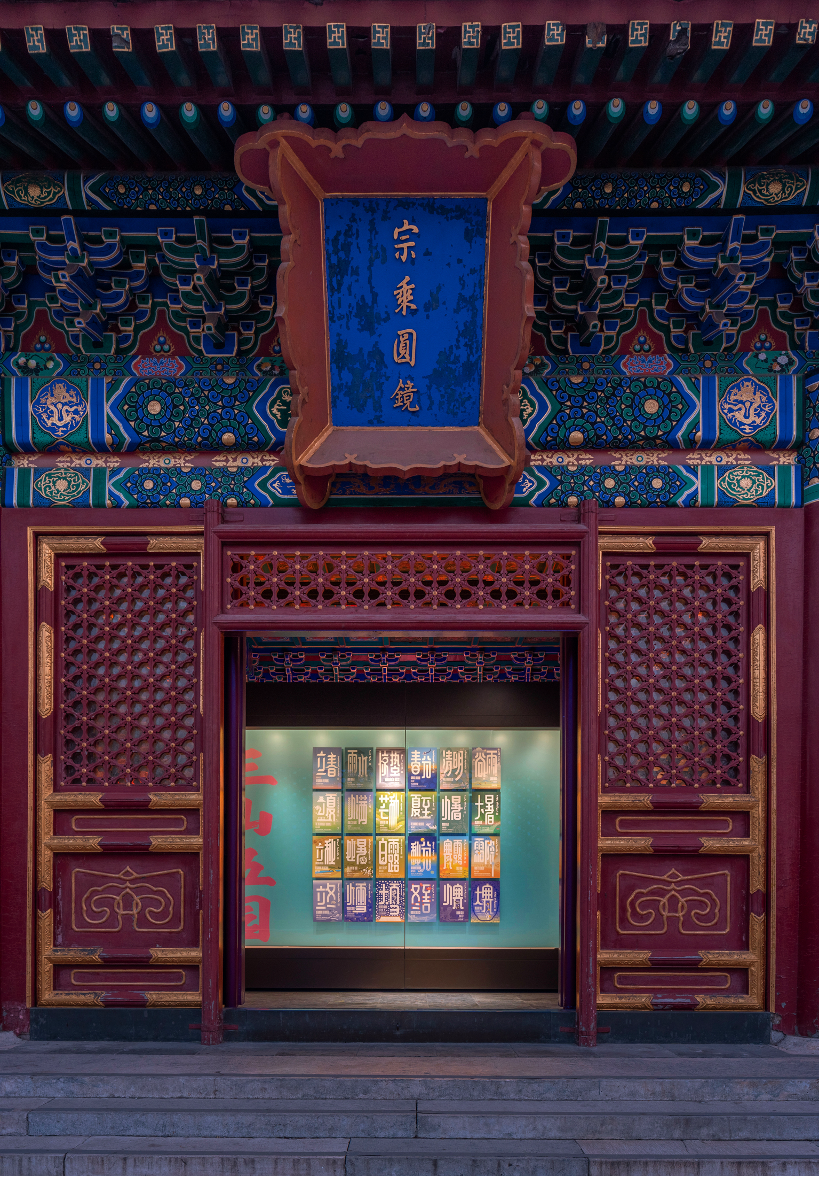
North entrance of Tianwang Hall exhibition Hall
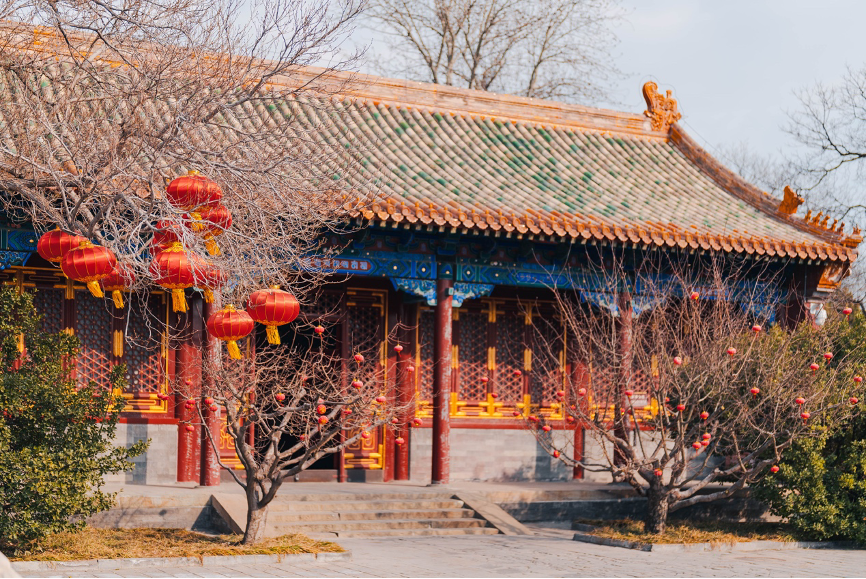
Exterior view of East affiliate halls
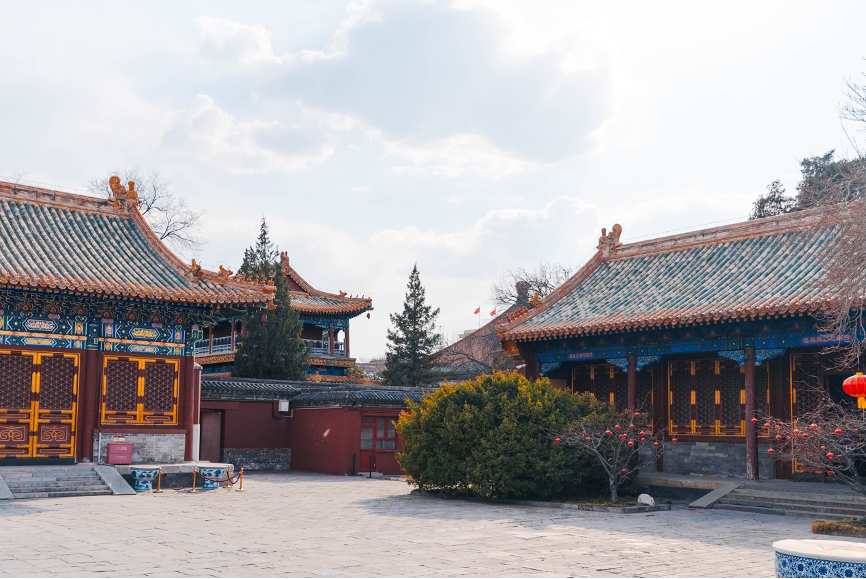
Exterior view of West affiliate halls
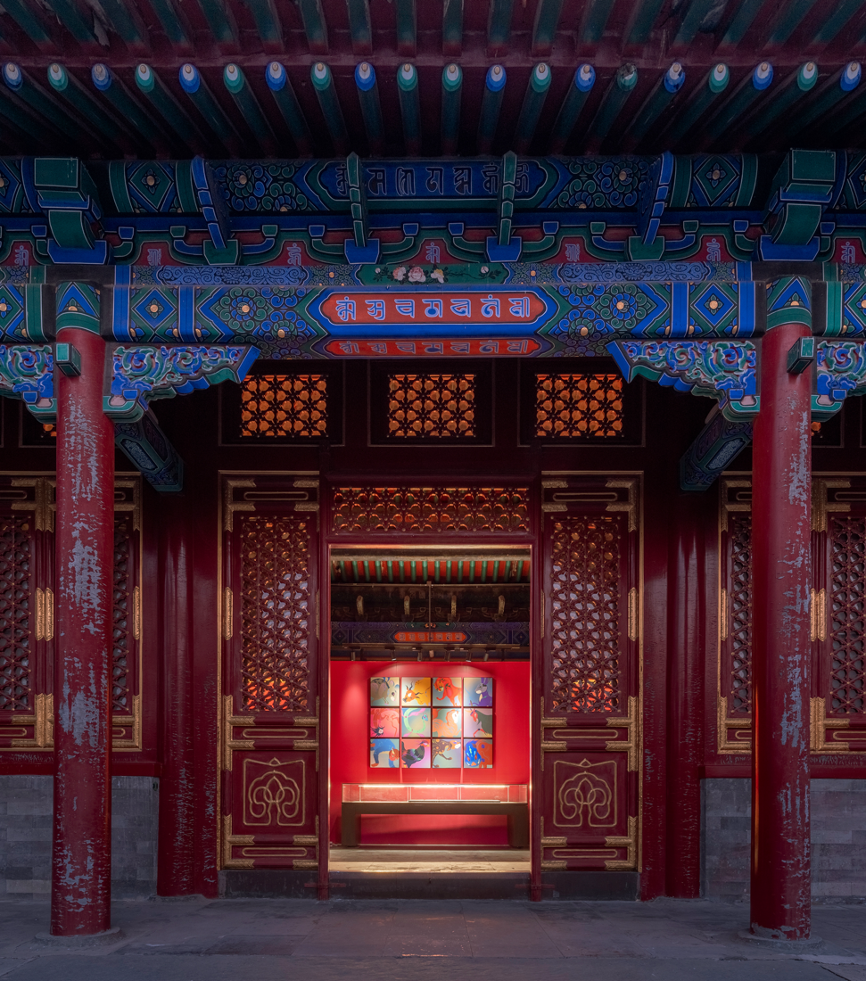
Entrance to the East affiliate halls

Interior view of East affiliate halls
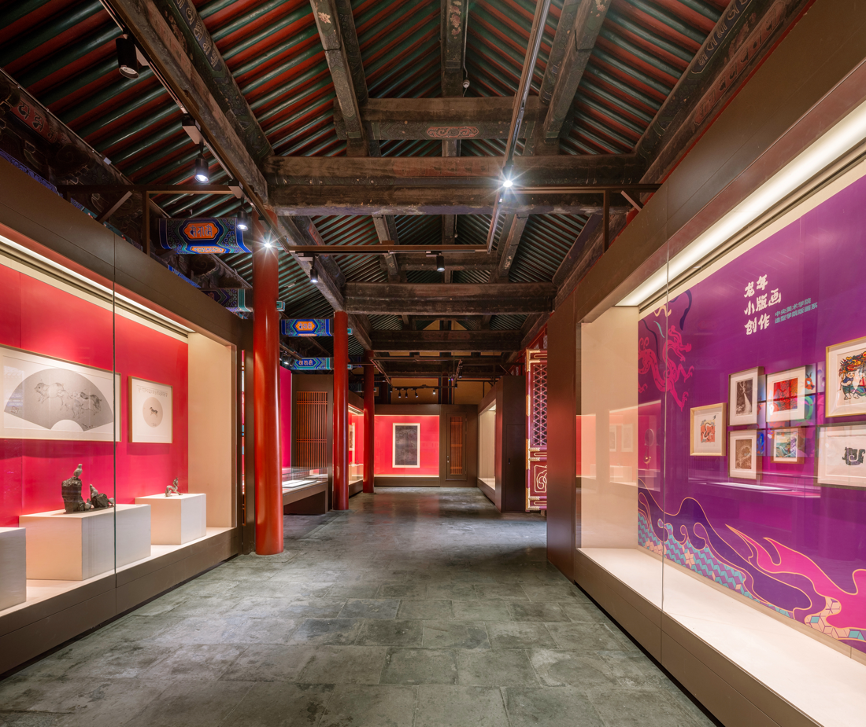
Interior view of East affiliate halls

Interior view of East affiliate halls
Exhibits on display
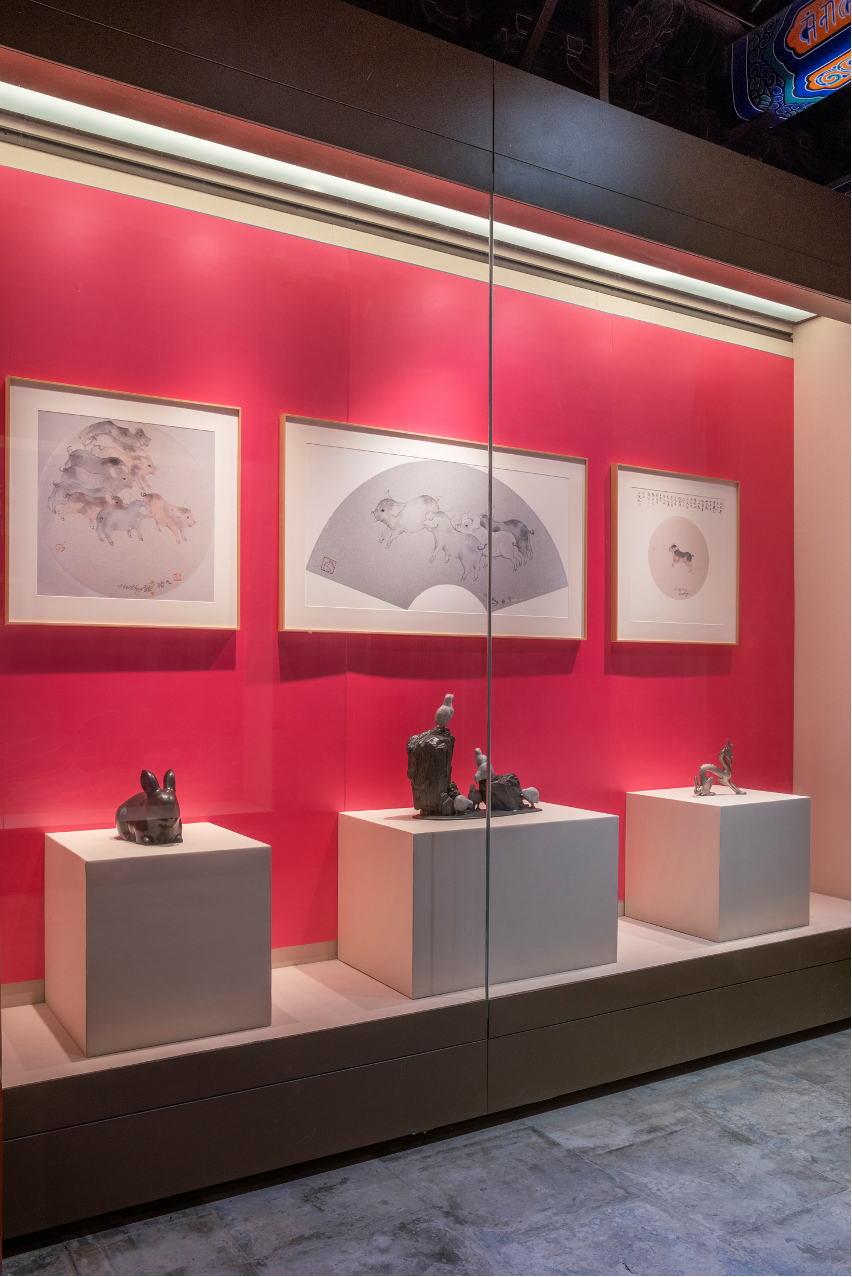
Paintings: Qiu Ting "12 Zodiac animals. Pig";
Sculpture: Left: “12 Zodiac Animals. Rabbit” by Shen Hongbiao;
Right: Xu Xiaonan "12 Zodiac animals. Dragon";
Middle: "Chicken Play" by Zou Dwen
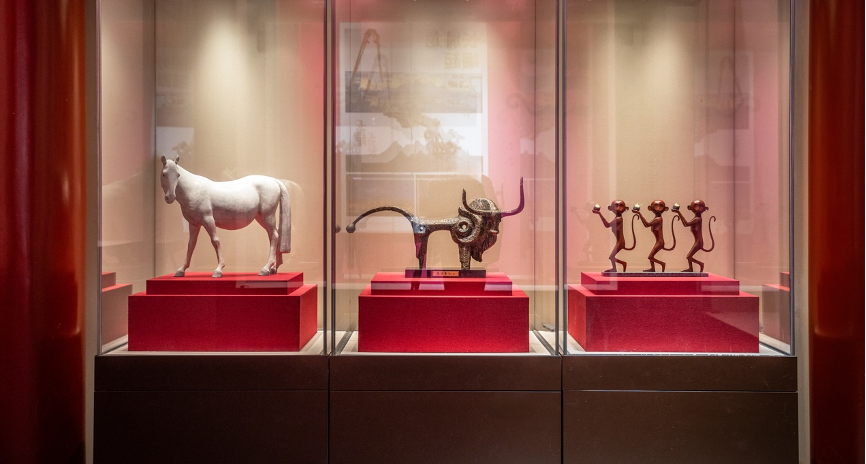
Sculpture: “October” by Wang Wei;
“The Cow” Han Meilin;
“Monkey” by Wu Xinkun
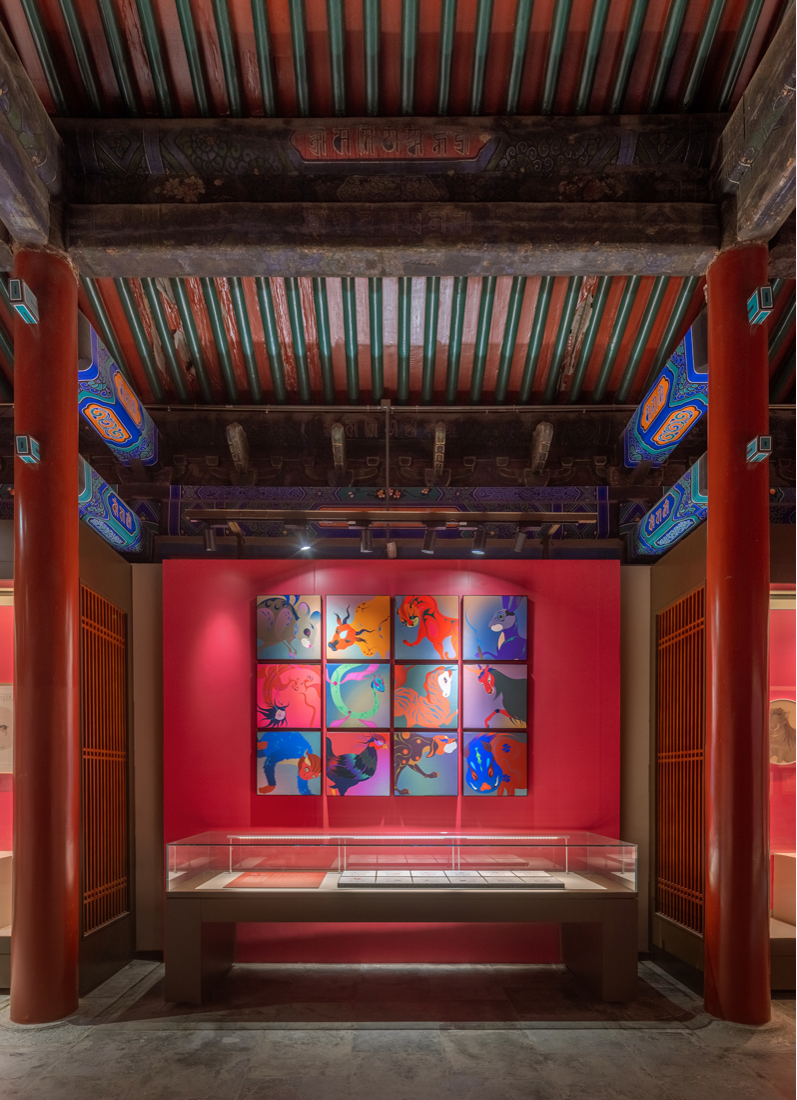
Digital print: “12 Zodiac animals” by Wang Chuan

Composite material Painting: “12 Zodiac animals” by Li Wenfeng
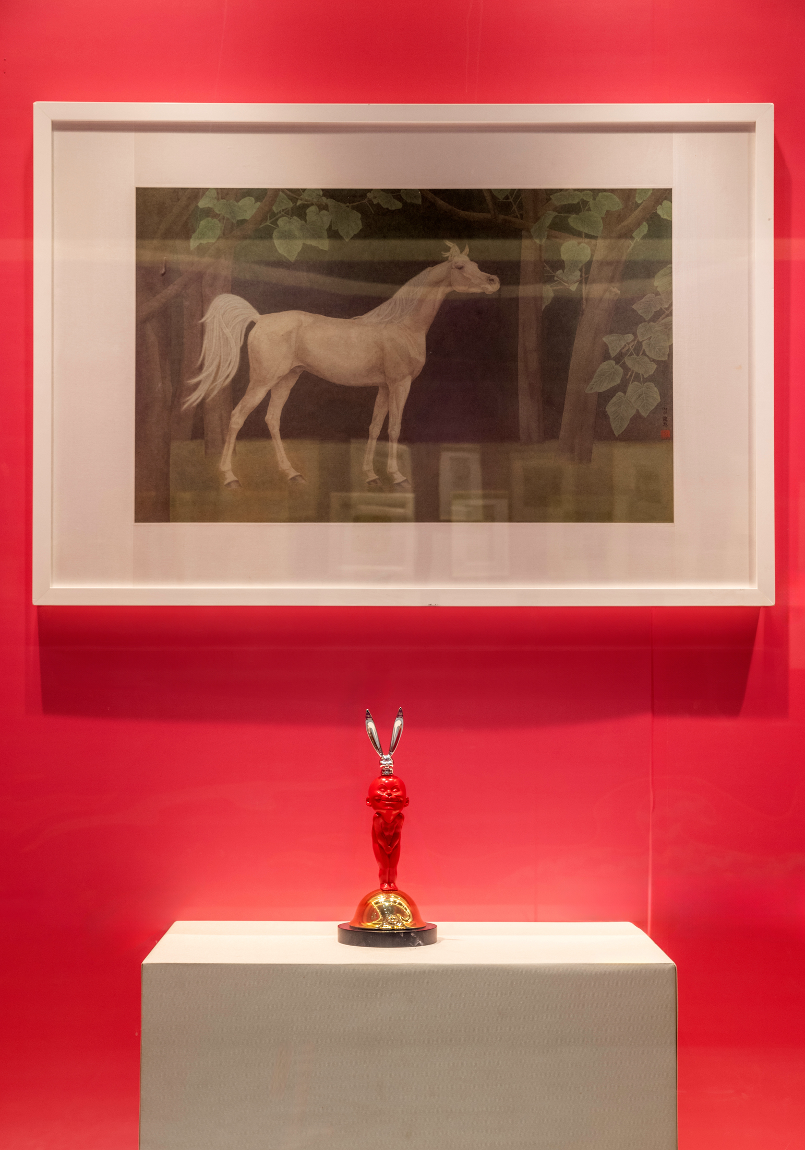
Chinese painting: “Shade of Trees” by Wei Wei;
Sculpture: “The Joy of Symbiosis” by Chen Wenling

Painting: “Pig, Monkey, Horse, Ox” by Ouyang Nanxi; Sculpture: Dragon by Chen Songlin; “The Cherry on the Cake” by Fang Xu
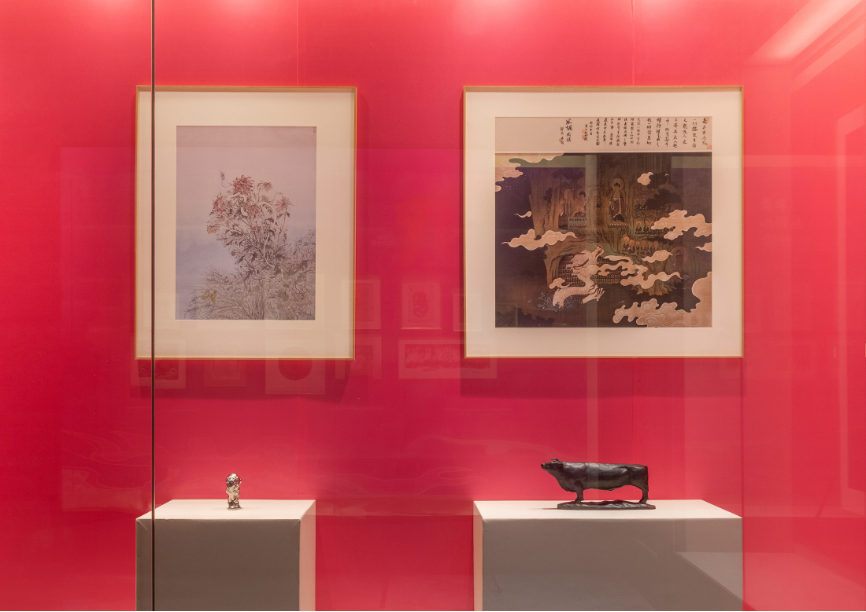
Paintings: "Snake" by Wei Xuanlan, "Listening to Happiness" by Zhou Jiaan; Sculpture: "Rat Eye" by Liuqing “Moving to the Wilderness”by Qiaoqian;
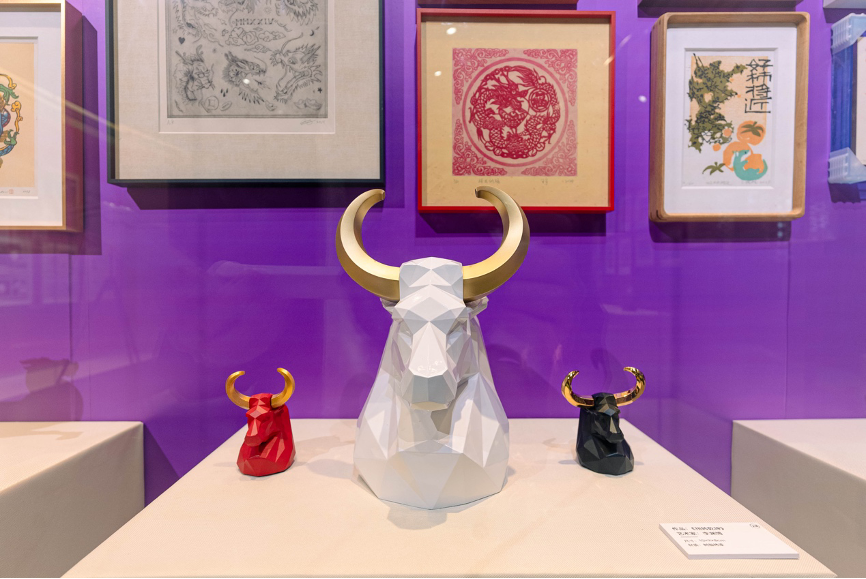
Sculpture: “Cow’ by Li Yuanbo; Central Academy of Fine Arts printmaking department teachers and students Dragon New Year prints
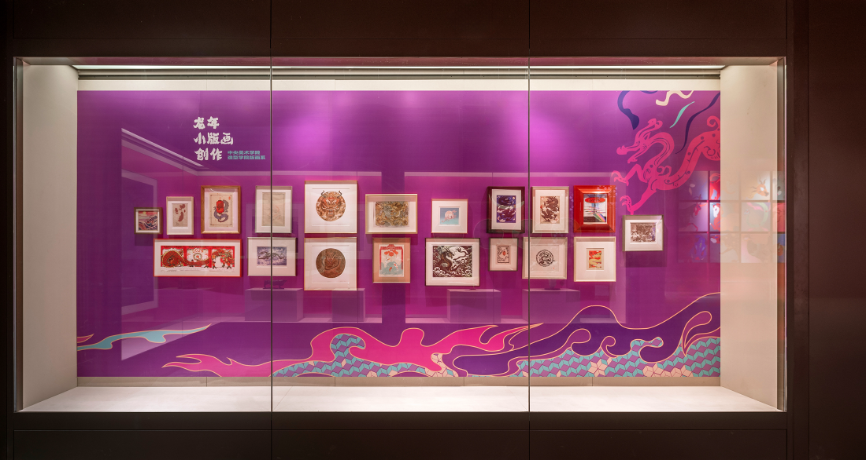
Chinese New Year prints by teachers and students of the printmaking Department of the Central Academy of Fine Arts

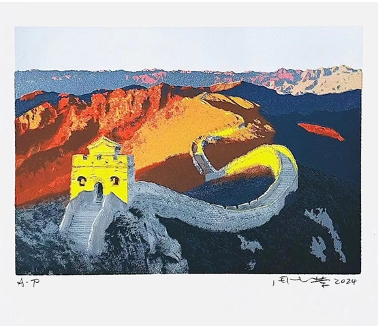
New Year prints: Guang Jun works, Zhou Jirong works
On January 18, 2024, the exhibition of Chanfu Temple in Beihai was opened in the strong atmosphere of the Spring Festival, and was warmly welcomed: The art exhibition during the Spring Festival gives Beijing citizens and visitors the opportunity to enjoy the zodiac-themed art works up close and get a high-level art experience while visiting the garden. Many research teams came to visit the exhibition. Beijing Satellite TV, Beijing News and other media reported on the exhibition, and the Beijing Municipal Park Administration Center also organized 11 municipal parks and Chinese Garden Museum related management personnel to visit the Chanfu Temple in Beihai Park.
The research team carefully observed and studied the artworks of the zodiac on display
The exhibition is suitable for all ages and has been warmly welcomed by Beijing residents and tourists
On February 3-4, 2024, the "Dragon Dance Chinese New Year" Zodiac theme pop-up and happy Chinese New Year activity sponsored by Beijing Municipal Culture and Tourism Bureau and hosted by Beijing Overseas Cultural Exchange Center was held in Mexico City, the capital of Mexico, and “The Global Zodiac Design Competition”was exhibited at the National Arts Center of Mexico. In order to celebrate the success of the 7th Year of the Dragon Bicycle Decoration Competition on Reform Avenue, the Beijing Municipal Culture and Tourism Bureau presented to the Mexico City Foreign Affairs Office the Dragon New Year print "The Heart of a Child" created by Yang Yanyu of the Central Academy of Fine Arts.

The Chinese New Year Cultural Festival opened at the National Arts Center of Mexico
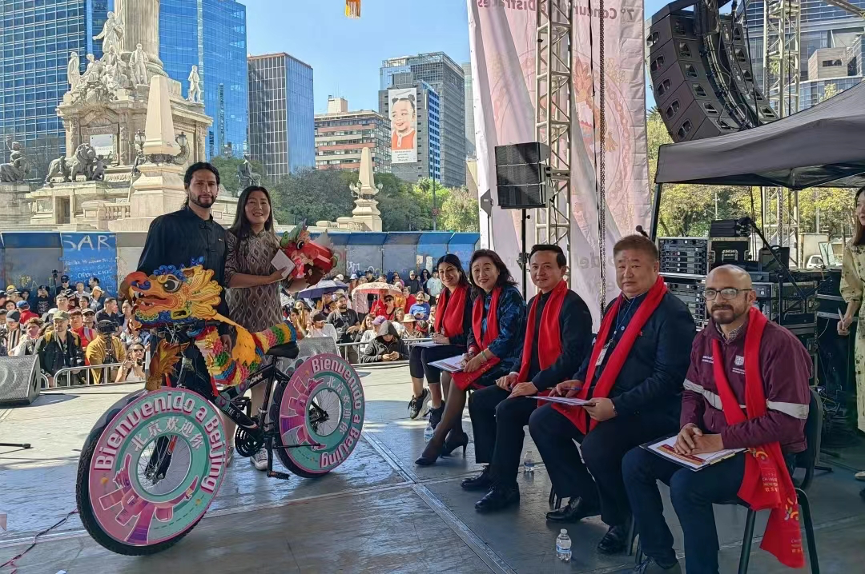
"Beijing welcomes You" bicycle

Pang Wei, from Beijing Municipal Bureau of Culture and Tourism presented the Dragon engraving "The Heart of a Child" to the Foreign Affairs Office of Mexico City, which is created by Yang Yanyu.
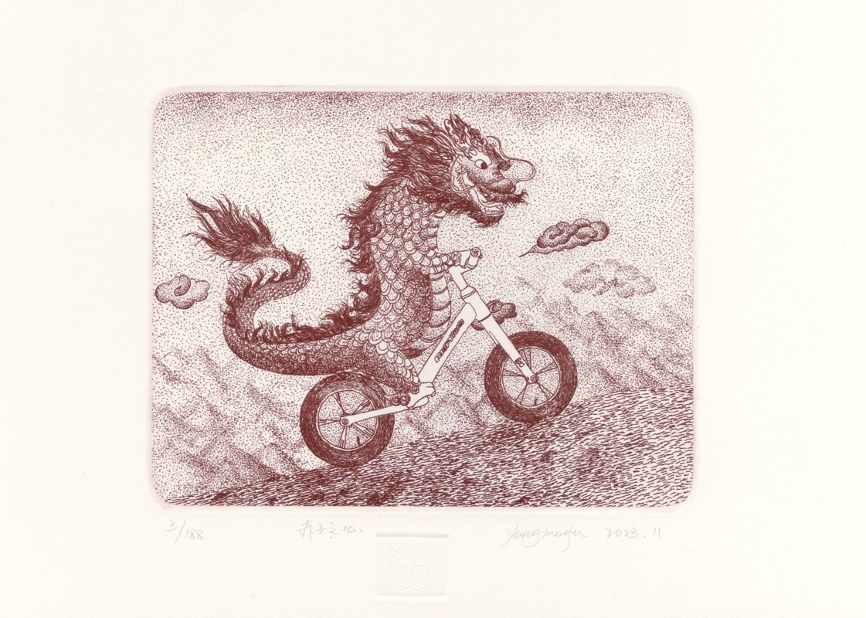
Engraving: “The Heart of a Child” by Yanyu Yang
The curatorial concept of " Auspicious Year after Year " invitational exhibition in Beihai Chanfu Temple is to introduce contemporary design and art into the cultural heritage sites in Beijing and make them relate to and dialogue with historical culture, to continue the historical context, to show the traditional Chinese culture, which is still strong and fresh in the contemporary era, and to add artistic color to the New Year of the Dragon in Beijing. At the same time, the exhibition also conveys to the society the artist's academic concept of caring about the mass communication of culture and art, empowering cultural travel and serving the society with art and design. Different from traditional exhibition venues such as art galleries and galleries, design exhibitions and art exhibitions held in cultural heritage sites and civic parks have a wider audience, stronger communication power and more down-to-earth atmosphere, and can more fully link with the local culture and historical traditions of the exhibition sites.
The exhibition is a response to the call to "firmly grasp the primary task of high-quality development and develop new quality productivity according to local conditions"; Is the Central Academy of Fine Arts Director Lin MAO in the CCTV "Two Sessions" special interview talked about "Let the future-oriented new era of all-disciplinary" big art "become a new quality of productivity", "with art to enable new growth points", "with artistic quality and humanistic spirit for the layout of the future industry to inject sustained power", "strengthen the deep integration of fine arts and urban development," This exhibition is also a confirmation and practice of new academic concepts such as "Creating iconic scenes to promote high-end cultural tourism activities".
Project Curator: Wang Hairu, Beijing Overseas Cultural Exchange Center
Academic curator: Wu Xiaomin, Central Academy of Fine Arts, Yuanmingyuan Research Center
Executive Curator: Kang Jianlin, Central Academy of Fine Arts, Yuanmingyuan Research Center
Exhibition Director Yang Yu, Central Academy of Fine Arts, Yuanmingyuan Research Center
Space Design: Yang Yu, Central Academy of Fine Arts, Yuanmingyuan Research Center
Chen Yueyin, Gao Qianli, Ma Xinyi, Yuan Yi, Master of Architecture
Visual communication: Kang Jianlin
Exhibition photography: Jin Weiqi, Mo Aoyan, Master student, School of Architecture
Exhibition Coordinator: Sun Yanan, printmaking Department, Central Academy of Fine Arts, Wang Jun, Art Museum
Project Coordinator: Beijing Overseas Cultural Exchange Center, Liu Qingshuang Gong, White Jie, Yu Yuyue
Artists:
Chinese Painting and Calligraphy: Qiu Ting, Wei Wei, Zhang Mingguan, Li Wenfeng, Ouyang Nanxi, Wei Xuanlan, Yu Zefeng, Zhou Jiangnan;
Printmaking: Guang Jun, Zhou Jirong, Kong Liang, Yang Hongwei, Huang Yang, Li Jun, Tan Tan, Zheng Qin Yu, Sun Yannan, Li Rongming, Liu Qiguang, Zhao Qianyu, Lu Biao, Su Jiannan, Yang Yanyu, Pan Dongzi, Yin Yiyang and many students and alumni of printmaking department;
Digital print: Wang Chuan;
Products: Zhang Baohua, Yang Qiong, Lu Liangliang, Shi Ge, Mo Aoyan, Wang Zijia.
Visual communication: Liu Zhao
Sponwor:
Beijing Culture and Tourism Bureau
Central Academy of Fine Arts
Foreign Affairs Office of the People’s Government of Beijing Municipality
Organizer:
Beijing Overseas Cultural Exchange Center
Central Academy of Fine Arts, Yuanmingyuan Research Center
Beihai Park Administration Office of Beijing
supporting agency:
Chinese Embassy in Belgium
Chinese Embassy in Mexico
The National Arts Center of Mexico
Banche International Carnival and Mask Museum, Belgium
Irish Immigration Museum
Beijing Haidian District cultural development promotion center
Beijing University of Technology
Special acknowledgments for the exhibition:
Hu Quanchun, Wei Enke


